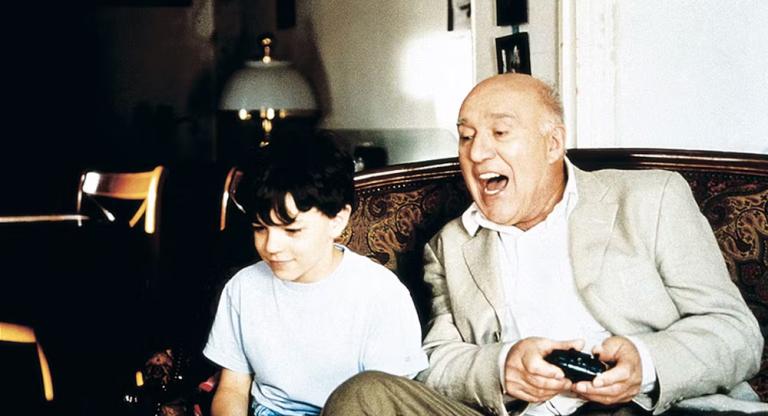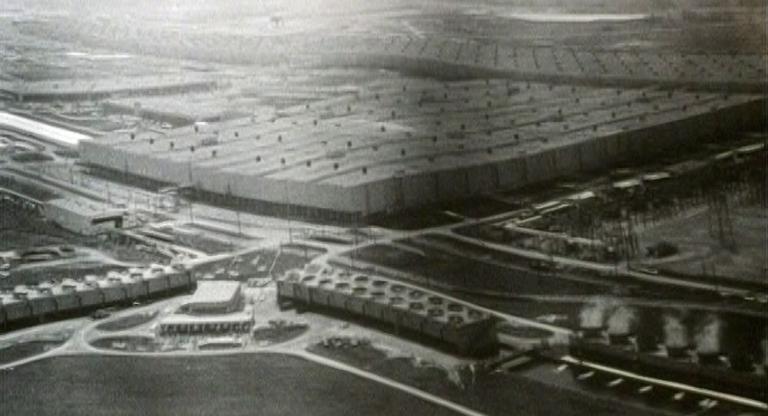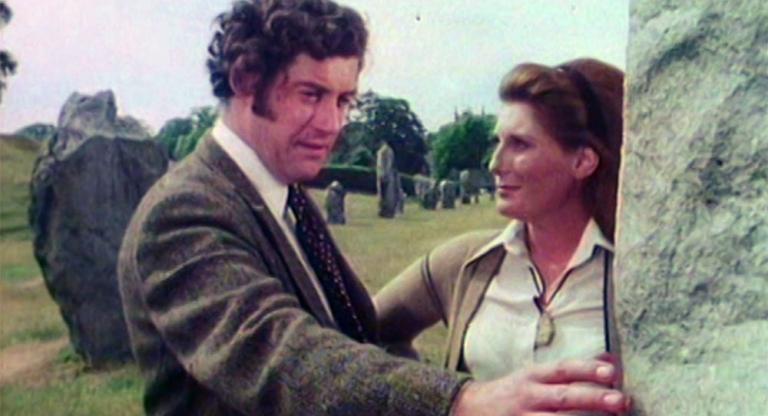Sometimes the way history is recorded produces stories that are as revealing than the historical facts themselves. Archives, where these facts are stored, are not innocent places, nor are their objects devoid of agency. The director Ulises de la Orden came to understand this in 2013, when he set out to make a documentary about the 1985 trial that investigated the responsibilities of the military junta during the 1976–1983 dictatorship in Argentina. Charged with crimes against humanity, the accused, including dictator Jorge Rafael Videla, were probed by a civil court and presented with 709 cases and 883 witnesses over 90 days—the largest trial in history since Nuremberg.
Two public-television cameras dutifully recorded over 530 hours of footage on U-matic tapes. After most of the accused were condemned, the footage was copied and preserved in the National Archive and in other sites around the world, for fear that political retaliation might make it inaccessible in the future. When de la Orden started his search for these tapes, 28 years after the trial, he was told to look elsewhere: eventually he teamed up with an NGO, Memoria Abierta, which holds a digitized copy, and with the Norwegian Parliament, which stores the VHS transfers next to the country’s constitution.
El juicio [The Trial] (2022) is the compelling narration of atrocities that were “difficult to imagine before and to understand afterwards,” as prosecutor Julio César Strassera put it in his memorable closing argument, and of the trial that attempted such a colossal task. The three-hour-long documentary also represents an attempt to understand, as well as an invitation to remember. Primarily based on the words of the victims and their families, structured into thematic chapters, the film presents evidence that no legal chronology or dramatic adaptation could have equally restored, especially for the benefit of unfamiliar audiences, both at home and abroad. Obliged by the fixed position of the cameras to show the witnesses facing the courtroom’s bench with their backs turned, El juicio shields their emotional and expressive vulnerability without silencing them. Viewers will notice the similarity of their own position watching the film with that of the witnesses and the courtroom’s gallery audience.
I sat down with Ulises de la Orden while he was at the Berlinale to present his film, which is now playing at the Museum of Modern Art’s Doc Fortnight. Our conversation has been edited and condensed.
Clare Miranda Scherffig: The backstory of El juicio’s footage is rather incredible, but I was wondering if and how the recordings from the courtroom were shared with the public during the trial.
Ulises de la Orden: In 1985 the civil justice took these [nine] commanders to trial. It was the first oral trial in Argentina and the first one to be filmed. [They had] no experience filming a trial and showing such audiovisual material. The defense had no strategy, except trying to stop the trial and deny everything. Since [the defense] could have [made] an argument that [the judges] were prejudging—every time you cut a piece [of footage] and show it, you're making a decision— the judges decided to not allow these [recorded] images to go public and ordered the broadcaster to show only three minutes without sound. Very quickly this trial was forgotten, because two years later impunity laws came out— “Punto Final” [1986] and “Obediencia Debida” [1987]—which were very difficult to digest for the Argentinians. In the ’90swe had a [pardon], and everybody went out [from prison]. The investigations finished then and were reopened in 2005. It took twenty years to re-begin. When we finished the film, there were more than one thousand people condemned. Most of the repressors paid or are paying for the crimes they committed. The first trial, in 1985, was the fundamental piece to begin this process of justice.
CMS: El Juicio edits together footage coming from two different sources: Memoria Abierta’s digitized files and the Norwegian tapes. Can you describe how you unpacked this giant box?
UdlO: The more I was having trouble accessing the material, the more I wanted to obtain it. Finally, I was introduced to Memoria Abierta, an NGO in charge of facilitating access to the material for the public. They knew me and my previous works, so they accepted and became associate producers. They gave me eight or nine terabytes of digitized U-matics. We also worked with the Norwegian Parliament. It was a very long process. It took us nine months. We were Alberto Ponce, the editor, Gisela Peláez, the assistant director, and me: three people working Monday to Friday, eight hours per day, to watch and catalogue all these 530 hours. We developed a method: Alberto was working on Avid, marking, cutting, adding text. Gisela created a huge Excel file. I took notes clip by clip, with timecode and handwritten marks. We had a script before viewing the material, which went very deep into the investigation. Twenty or more scripts were developed after reviewing the material, because everything changed.
CMS: Was your intention to work only with the footage from the beginning?
UdlO: Yes. We made many experiments, adding other archives, shooting extra scenes. . . . I experimented a lot in writing and a little with editing, but I always came back to the same [idea]: we must stick to the original footage. That’s enough; this is our piece of gold that we must mold. This material was also chaotic by itself; 530 hours is the ocean.
CMS: The film is divided in 18 chapters, titled after quotes from the witnesses and organized by thematic clusters. Are they chronological? What was your method to index and compose the narration?
UdlO: We didn’t work at all chronologically. We had this Excel sheet with three hundred thousand entries, all tagged and flagged, for instance with “close up,” or the name of the person talking, the subject theme, “red tie,” or how people were dressed, because we needed to ensure continuity through the editing. In my notes I wrote down everything that piqued my interest: a dialogue, a camera movement.
CMS: I don’t remember many camera movements, or zooms. Did you manipulate the image in any way?
UdlO: Yes, just a little bit. Every time there was a camera movement, that immediately piqued my attention. Because everything was very static.
CMS: But you did manage to create a dialectic between the images and spoken accounts, a rhythm that is quite captivating despite the upsetting content of the interviews. How did you achieve that?
UdlO: From the very beginning we decided not to work by cases. I didn't want the film to be a catalogue of cases. I wanted to show the elements that allowed the judges to develop the verdict of [guilty for] crimes against humanity. The idea that ruled the editing was to work by subject and by my view as a director: with 530 hours, anyone here can make a different film! We wanted to tell the story that tells the trial, not the trial [itself]. We began with many themes; one crucial [theme] was whether this was a war or not—something still being discussed in Argentinian society. The fascist groups say that this was a war, and [the victims] were the casualties of this war. Justice said it was not a war; they were crimes against humanity. But we wanted to give all the arguments from both sides as well. We continued trying to find the syntheses, where the “pure thing” was.
CMS: Viewers will discover the topics for themselves, but there are well-known episodes, like the cases of Adriana Calvo, Dagmar Hagelin, “la Noche de los Lápices.” Others are more general, like the parents’ testimony forming a sort of “chorus” throughout the film. Finally, some stories could be worthy of separate films, like the one about the officer who infiltrated the Madres de Plaza de Mayo.
UdlO: That reminds me of one of the most difficult things to decide: whether to credit everybody during the film or not. We did exhaustive experiments until we decided that there was no need to mention everyone [as they speak], just to be clear about what they are saying. The only thing you need to know is that one woman gave birth in a police car while she was handcuffed. [Each witness is eventually credited in the end credits –Ed.] I also think that the film must have a didactic goal: if we succeed with the public—in Argentina but perhaps also abroad—the film is just the beginning of your own investigation. Not everything can be included. It's “just” a film, and it’s seven hundred cases: any of them has a story strong enough to make a documentary or a fiction or a series out of it.
CMS: Some of the accounts told by the victims—terrible experiences of violence, torture, rape—resonate very closely with other chronicles of abuse of power, other dark moments of recent global history.
UdlO: This trial was the first time in history in which democratically, just with ordinary justice and without external power, our country held its own genocide [culprits] accountable and condemned them. It’s the base stone for a judicial power that is still going on, so it's a story bigger than Argentina: it’s about how we can produce justice and what justice is useful for.
CMS: Could you speak a little bit about the role of the spectator? I noticed that we barely see the witnesses’ faces, as they are mostly shot from their backs. There is a sense of protection and respect, but we are also watching an image that mirrors how the audience is sitting in the cinema. Did you think about this parallelism?
UdlO: I knew that the cameras were in the back of the hall, the judges were looking forward, and the witnesses would have been seen from the back. At the beginning, it was like, “how am I going to make a film without seeing the facial expressions of the most important people I want to show?!”. But. well, this is the archive, and I want to work with it. What happened to me—and I think this happens in the film, too—is that you begin to use your imagination. It's on the spectator to make up what [might be the] expression of that face [which is] relating these terrible accounts of torture, killings, of sons and daughters going missing.
CMS: Another film about the trial came out recently, Santiago Mitre’s Argentina, 1985 (2022). While exiting one public screening at the Venice Film Festival, I overheard a teenaged boy asking his father if the film told a real story. Like El juicio, Mitre’s film fulfills a pedagogical duty. But why now?
UdlO: I don't know. We began with this film in 2013. At some point we got to know that Mitre was doing his own, which I think is great. It has a very powerful way of introducing this forgotten subject. As far as I can think, and as far as my ideological and political [positions] go, this trial is the most important factor in our democracy. After the Revolution of 1812, we were never again the subjects of anyone. Argentinian society changed forever after this trial. There are three words that human rights organizations always keep, as a flag: memory, truth and justice. El juicio is a way of adding a little bit to that position.
El juicio screens this evening, March 1, and on March 6, at the Museum of Modern Art as part of Doc Fortnight. It is the film’s North American premiere. Director Ulises de la Orden will be in attendance for a Q&A.



